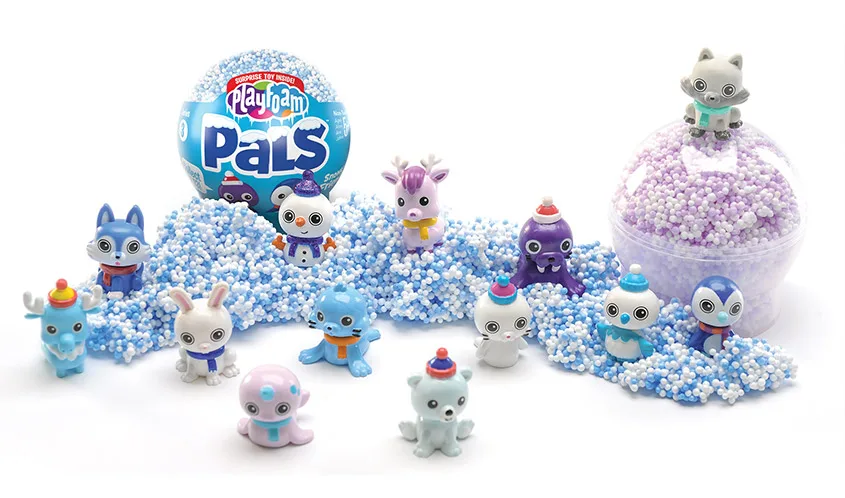by Amy Opheim, freelance marketing consultant
While it’s true that technology is changing the landscape of the toy market and offering some exciting new ways for kids to play, many of children’s interests remain timeless and fairly predictable.
Think about pretend play and dress up, arts and crafts, building, and board games: These play patterns are classics because they appeal to a basic way kids want to play. From wooden blocks to LEGO Duplo, preschool-aged kids have enjoyed the process of stacking and building for hundreds of years. The same goes for drawing, painting, sculpting, and creating. Madame Alexander launched in 1923, and continues to create dolls with which kids can express their nurturing natures. GUND, a major player in the plush category since 1898, knows kids will always enjoy collecting and cuddling plush animals. It’s no wonder, then, that these categories are impacted (in many cases, severely) with product—every toy manufacturer wants a piece of the classic play pie!
So, the question is this: How do you create a product that capitalizes on one of these timeless play patterns but still stands out in a crowded category? How do you break through the clutter?
First, you have to do your research. Spend some time in the stores and online and look carefully at your competition. Take note of everything, from features and benefits to piece count and age grade. Some trends will emerge—things each product offers in order to appeal to that specific play pattern. You should also find some anomalies—things individual products offer that feel unique and different from the competition.
When I work with clients to come up with product names, tag lines, and packaging copy for products in classic categories, I ask for this research first. Understanding the competitive set is critical to understanding three things:
A: What does your product have to do in order to compete in the category?
B: What are others are doing to be unique in the category?
C: Given A and B, what does your product do that feels original and special?
Let’s look at a classic category such as arts and crafts. Dig into the sculpting space and you’ll find brands like Crayola’s Model Magic, Playfoam by Educational Insights, and Hasbro’s Play-Doh, all designed for preschoolers. They’re all sculptable and tactilely satisfying. All three encourage creativity, inspire imagination, and promote self-expression. Model Magic is unique in that it dries hard, leaving the sculptor with a permanent work of art. On the flip side, Play Doh is not meant to dry out, but it does if not stored properly, rendering it unusable. So, what does Playfoam do to differentiate itself from these two major players? It plays up “The Everlasting Squish,” a slogan meant to communicate that the product never dries out, no matter how long you use it or how you store it. That’s a meaningful point of distinction to the consumer. Then, Playfoam takes things one step further by hiding collectible characters inside pods of Playfoam and marketing them as Playfoam Pals. Never dries out? Adorable surprise character inside? That feels really different.
Or, think about kids’ vehicles. With hundreds of basic kick scooters on the market, how do you make yours stand out? Most of them claim a smooth ride. Most are adjustable and grow with kids. Many fold for easy transport and storage. What else can you do to a basic kick scooter to catch the consumer’s eye? Adding a special feature, such as the spark bar on the Razor Spark Scooter that leaves behind glittering sparks as kids ride, is definitely one way. Maybe someone will make a scooter that blows bubbles next.
We previously touched on plush. What can you do to differentiate one stuffed dog from another? Ask Scruff-a-Luvs! Against all traditional marketing sense, these lonely, messy animals start out as a matted ball of fur. Kids get to hand wash, dry, and brush them out. It’s the ultimate reveal—talk about a fun twist on traditional plush play!
You get the idea. Before you jump into the potentially lucrative business of classic play patterns, make sure your take has a twist that’s meaningful enough to make a consumer choose your version over other choices. Then, shout that twist from the rooftops!
[author] [author_image timthumb=’on’]https://toybook.com/wp-content/uploads/2019/02/AMY-HEADSHOT-.jpg[/author_image] [author_info]Amy Opheim has more than 20 years of experience creating copy and content that compels consumers into action. She has served as director of marketing for several mid-sized toy companies and worked with dozens of manufacturers as a consultant, from start-ups to high-profile brands. Learn more at linkedin.com/in/amy-opheim.[/author_info] [/author]

